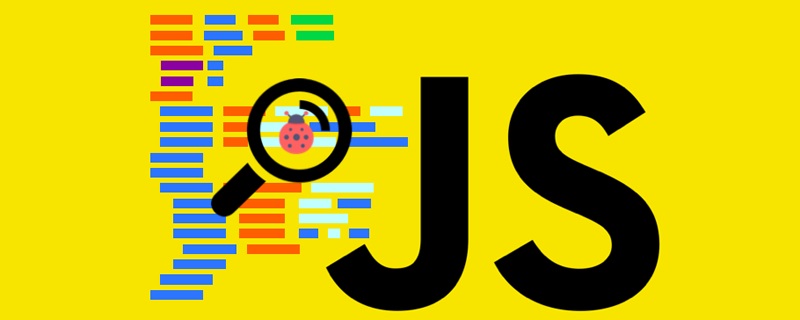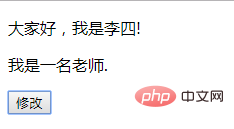 Web Front-end
Web Front-end
 JS Tutorial
JS Tutorial
 In-depth understanding of the differences between jQuery and Vue (with code)
In-depth understanding of the differences between jQuery and Vue (with code)
In-depth understanding of the differences between jQuery and Vue (with code)

In-depth understanding of the difference between jQuery and Vue (with code)
1.jQuery must first obtain the dom object, and then The dom object performs value modification and other operations
2.Vue first binds the value to the js object, and then modifies the value of the js object. The Vue framework will automatically update the dom value.
3. It can be simply understood that Vue helps us perform dom operations. When we use Vue in the future, we need to modify the value of the object and bind the elements to the
object. The Vue framework will automatically help us. Do a good job in dom related operations
4. This kind of dom element changes with the change of the JS object value, which is called one-way data binding. If the value of the JS object also changes with the change of the dom element's
value, it is It’s called two-way data binding
Use a simple example to illustrate the difference between writing Jquery and Vue
Modify the text
After clicking the button:
Change to

(1)jQuery code
<!DOCTYPE html>
<html lang="en">
<head>
<meta charset="UTF-8">
<script src="https://cdn.bootcss.com/jquery/3.2.1/jquery.js"></script>
</head>
<body>
<p>
<p>大家好,我是<span id="name">张三<span>!</p>
<p>我是一名<span id="jop">医生</span>.</p>
<button id = "modifyBtn">修改</button>
</p>
<script type="text/javascript">
$("#modifyBtn").click(function(){
$("#name").text("李四");
$("#jop").text("老师");
});
</script>
</body>
</html>(2)Vue code
<!DOCTYPE html>
<html>
<head>
<meta charset="utf-8">
<title>Vue</title>
<script src="https://cdn.bootcss.com/vue/2.2.2/vue.min.js"></script>
</head>
<body>
<p id="app">
<p>大家好,我是<span>{{name}}<span>!</p>
<p>我是一名<span>{{jop}}</span>.</p>
<button v-on:click="modifyInfo">修改</button>
</p>
<script>
new Vue({
el: '#app',
data:{
name:"张三",
jop:"医生"
},
methods:{
modifyInfo:function(){
this.name = "李四";
this.jop = "老师";
}
}
})
</script>
</body>
</html>Thank you everyone for reading, I hope you will benefit a lot.
This article is reproduced from: https://blog.csdn.net/xutongbao/article/details/77870989
Recommended tutorial: "JS Tutorial"
The above is the detailed content of In-depth understanding of the differences between jQuery and Vue (with code). For more information, please follow other related articles on the PHP Chinese website!

Hot AI Tools

Undresser.AI Undress
AI-powered app for creating realistic nude photos

AI Clothes Remover
Online AI tool for removing clothes from photos.

Undress AI Tool
Undress images for free

Clothoff.io
AI clothes remover

AI Hentai Generator
Generate AI Hentai for free.

Hot Article

Hot Tools

Notepad++7.3.1
Easy-to-use and free code editor

SublimeText3 Chinese version
Chinese version, very easy to use

Zend Studio 13.0.1
Powerful PHP integrated development environment

Dreamweaver CS6
Visual web development tools

SublimeText3 Mac version
God-level code editing software (SublimeText3)

Hot Topics
 1378
1378
 52
52
 How to add functions to buttons for vue
Apr 08, 2025 am 08:51 AM
How to add functions to buttons for vue
Apr 08, 2025 am 08:51 AM
You can add a function to the Vue button by binding the button in the HTML template to a method. Define the method and write function logic in the Vue instance.
 How to jump to the div of vue
Apr 08, 2025 am 09:18 AM
How to jump to the div of vue
Apr 08, 2025 am 09:18 AM
There are two ways to jump div elements in Vue: use Vue Router and add router-link component. Add the @click event listener and call this.$router.push() method to jump.
 How to use function intercept vue
Apr 08, 2025 am 06:51 AM
How to use function intercept vue
Apr 08, 2025 am 06:51 AM
Function interception in Vue is a technique used to limit the number of times a function is called within a specified time period and prevent performance problems. The implementation method is: import the lodash library: import { debounce } from 'lodash'; Use the debounce function to create an intercept function: const debouncedFunction = debounce(() => { / Logical / }, 500); Call the intercept function, and the control function is called at most once in 500 milliseconds.
 How to use vue pagination
Apr 08, 2025 am 06:45 AM
How to use vue pagination
Apr 08, 2025 am 06:45 AM
Pagination is a technology that splits large data sets into small pages to improve performance and user experience. In Vue, you can use the following built-in method to paging: Calculate the total number of pages: totalPages() traversal page number: v-for directive to set the current page: currentPage Get the current page data: currentPageData()
 How to pass parameters for vue function
Apr 08, 2025 am 07:36 AM
How to pass parameters for vue function
Apr 08, 2025 am 07:36 AM
There are two main ways to pass parameters to Vue.js functions: pass data using slots or bind a function with bind, and provide parameters: pass parameters using slots: pass data in component templates, accessed within components and used as parameters of the function. Pass parameters using bind binding: bind function in Vue.js instance and provide function parameters.
 How to jump a tag to vue
Apr 08, 2025 am 09:24 AM
How to jump a tag to vue
Apr 08, 2025 am 09:24 AM
The methods to implement the jump of a tag in Vue include: using the a tag in the HTML template to specify the href attribute. Use the router-link component of Vue routing. Use this.$router.push() method in JavaScript. Parameters can be passed through the query parameter and routes are configured in the router options for dynamic jumps.
 Configuration and conflict resolution of Galera Cluster multi-master cluster
Apr 08, 2025 am 09:30 AM
Configuration and conflict resolution of Galera Cluster multi-master cluster
Apr 08, 2025 am 09:30 AM
GaleraCluster is a database cluster architecture based on multi-master replication, with the advantage that all nodes can receive write requests at the same time. When building a Galera cluster, you need to pay attention to: 1. Ensure that the node resources are sufficient and the network is stable; 2. Carefully configure the my.cnf file, especially the wsrep_provider_options and gcache.size parameters; 3. Correctly initialize the cluster and monitor the logs. Even if the configuration is correct, conflicts may occur. They need to be resolved through log analysis and application layer policies, and performance can be improved through network optimization, parameter tuning and application layer optimization. Continuous monitoring and log analysis are key to maintaining Galera clusters.
 How to use push function for vue
Apr 08, 2025 am 07:39 AM
How to use push function for vue
Apr 08, 2025 am 07:39 AM
The push() function in Vue is used to add new elements to an array, modify the original array and return a new length. Usage method: Define the array, use the push() function to add elements, and the new element will be added to the end of the array. Example: const arr = ['a', 'b', 'c']; arr.push('d'); Returns the new array: ["a", "b", "c", "d"].



